Info
Potential Health and Hair Benefits of Henna
Henna is a flowering plant from Lythraceae (Loosestrife family) plant family that includes almost 620 species. Henna is botanically known as Lawsonia inermis, which is the only plant species in the Lawsonia genus. Henna is native to India, North Africa, and Southwest Asia. The plant has been found in warm parts of North and South America, West Indies, and Australia.
The plant has various vernacular names, but the whole world can recognize it with the name ‘Henna.’ Most of the people think about hair dye when you ask about this plant.
Henna is the English name of the plant that originated from the Arabic word called ‘ḥinnā.’ In some places, Henna means the dye prepared from the plant, which is dark brown/red-colored.
The dye is used for hair and as temporary tattoos on hand and legs. Henna is known as mehndi or Mehendi in India, Pakistan, and other Southeast parts of Asia.
In India, Henna is the most-liked female beauty aspect. In an Indian wedding, there is a tradition followed before marriage called ‘mehndi function,’ where the bride gets henna arts in her hands and legs.
It is the tradition followed for centuries. You can create any design and art forms using this dye on your body.
In this Article
For more decades, henna is used as a dye for hair, skin, and fingernails. Somewhere, it is used to dye wool, leather, and silk fabrics.
In Asia and Africa, the plant is cultivated for its dyeing and medicinal applications.
What is Henna?
Henna is known in different ways around the world. It is probably identified as a dye for hair and skin, which is traditionally used by various cultures in terms of medicinal and beauty aspects.

It has different names where Henna, Hina, and Egyptian privet are most popular. You can identify this plant with its small dark green leaves, small pink flowers, and fruits.
In addition to dye form, the plant parts such as leaves, bark, and seeds are also used in Aqueous extracts, salves, and tinctures. Its versatile property, medicinal, and beauty activities make it a valuable plant and substance in many traditional medicines like Ayurveda.
Henna is typically available in the forms of dried seeds, oil, bark, dried leaves, and powdered form for medicine application.
All the parts of the plant contain high amounts of chemical constituents and nutritional values. It also boasts anti-inflammatory, antibacterial, antiviral, astringent, and hypotensive properties.
Plant Description: Henna
Henna is an evergreen small and slender tree that has many branches and heavy scent. It grows 6 to 25 feet tall.
The plant usually grows in dry, river beds that are flooded temporarily, hillsides, coastal wasteland, and rock crevices. In some countries, it grows in the waterways and semi-arid places. The plant has modified with the environmental changes.
It can withstand drought conditions and low air humidity. The plant requires dry or well-drained, fertile soil with sunny places.
It can endure stony, weak, and sandy soils and adapt to fertile and heavy clay soils. Matured plants can tolerate even extreme drought.
It has grey to brown tree barks. The young branches of the plant are green and quadrangular, which turn to red as they mature.
The mature plant has spiny stems and branches. The plant has an alternative, sub-sessile, entire, elliptic, and lanceolate leaves with 2 to 20 mm width and 8 to 44 mm length.
The veins on the upper surface smell like tea and are depressed.
Flowers
Henna plants bear small, scented, white, and have many large pyramidal terminals. Flowers are 1 cm across and have 4 petals in the bud. The calyx has 3 mm lobes and 2 mm tubes.
The petals are ovate and found in white or red color. There are eight stamens found in the rim pairs of the calyx tube. The ovary is erect, 5 mm long, and has four cells. The blossom takes place from April to May.
Fruits
Small and brownish capsules follow flowers with 4 to 8 mm diameter. There are almost 32 to 49 seeds in a fruit that open into four splits irregularly.
The seeds are 3 mm diameter, small, numerous, brown dotted, pyramid shape, and thick coating.
Growing henna from seeds needs a high tempered place for germination and maximum growth and optimum development.
Henna Plant Scientific Classification
| Scientific Name | Lawsonia inermis |
|---|---|
| Kingdom | Plantae (Plants) |
| Subkingdom | Tracheobionta (Vascular plants) |
| Infrakingdom | Streptophyta (Land plants) |
| Superdivision | Spermatophyta (Seed plants) |
| Division | Magnoliophyta (Flowering plants) |
| Subdivision | Spermatophytina (spermatophytes, seed plants, phanérogames) |
| Class | Magnoliopsida (Dicotyledons) |
| Subclass | Rosidae |
| Superorder | Rosanae |
| Order | Myrtales |
| Family | Lythraceae (Loosestrife family) |
| Genus | Lawsonia L. (lawsonia) |
| Species | Lawsonia inermis L. (henna) |
Synonyms of Lawsonia inermis
- Alcanna spinosa (L.) Gaertn.,
- Lawsonia alba Lam.
- Lawsonia coccinea Sm.
- Lawsonia falcifolia Stokes
- Lawsonia inenmis Linnaeus
- Lawsonia purpurea Lam.
- Lawsonia speciosa L.
- Lawsonia spinosa L.
- Rotantha combretoides Baker
Plant Description In Short
| Origin | Egypt |
|---|---|
| Native |
|
| Plant Growth Habit |
|
| Growing Climates |
|
| Soil |
|
| Plant Size | Reach 1.8 to 7.6 m length |
| Bark | Greyish-brown color |
| Stem | Spiny |
| Branch |
|
| Leaf |
|
|---|---|
| Flowering Season | April & May |
| Flower |
|
| Fruit |
|
| Seed |
|
| Propagation |
|
| Taste | Bitter & Acrid |
| Plant Parts Used | Seeds, Roots, Leaves, Flowers, & Fruits |
Common Names of Henna
- Botanical Name: Lawsonia inermis
- English Names: Alcanna, Camphire, Cypress shrub, Egyptian privet, Henna, Jamaica mignonette, Mignonette bush, Mignonette tree, Mindie, and Smooth Lawsonia.
- Tamil Name: மருதாணி / Maruthani
- Malayalam Name: മൈലാഞ്ചി / mailāñci
- Telugu Name: గోరింటాకు / Gōriṇṭāku
- Kannada Name: ಗೋರಂಟಿ / Gōraṇṭi
- Hindi Name: मेंहदी / Mehendi
- Marathi Name: मेंदी / Mēndī
- Gujarati Name: હીના / Hina
- Punjabi Name: ਮਹਿੰਦੀ / Mehndi
- Bengali Name: মেহেদি / Mehedi
- Urdu Name: مہندی / Mehendi
- Arabic Name: الحناء / alhana
Other common names of Henna are Hina, inai, hinai, and Pacar Kuku.
History and Facts of Henna Plant
In the past few decades, Henna art has become more prevalent in Western culture. As a primary dye for hair and skin, it is also used as a traditional yet trending ornamental form of art for hand and foot. It is not as well known for its healing benefits as its dyeing applications.
Henna originally comes from Egypt, which is the primary supplier of the plant to the world.
The plant leaves are dried and crushed into a fine powder adding other natural ingredients to make a reddish-brown dye. Black tea, eucalyptus oil, and lemon juice are other substances that added to the henna dye.
Henna dye with very dark black color is not safe. The color says it contains various chemical compounds or unnatural contents to get the color and texture. Henna hair and skin dyes available in the stores often contain many harmful and severely reactive chemicals, so check the label before using it.
Most people think of India when hearing about Henna arts and uses. The history and usage of henna spread across the Middle East countries. But there are reported News that says henna has been used in 1200 BC in Egypt for dyeing hair, skin, nail, and it was also used in the mummification process. It was said that Cleopatra, the beautiful, used henna to maintain her beauty.
Henna is highly observant and has a cooling effect, which gives a refreshing and tingling sensation to the skin when topically applied. After the cooling impact of henna was revealed, people lived in the desert, and most hot places started using henna for cooling their bodies. They made a henna paste and applied it on themselves, with that they discovered the air conditioning effect of it. From this topical application, mehndi culture was brought up.
Mehendi tradition is followed for centuries because it brings good fortune, love, prosperity, and protection from evils.
Medicinal Properties of Henna
- Anticancer
- Antidermatophytic
- Antidiabetic
- Antifertility
- Anti-inflammatory
- Antimicrobial
- Antioxidant
- Antiparasitic
- Antiviral
- Hepatoprotective
- Immunomodulatory
- Protein Glycation Inhibitor
- Tuberculostatic
- Wound Healing
15 Potential Health Benefits of Henna Plant
Spite of Henna offers excellent benefits in improving hair health as a dye plant, and it also provides various medicinal benefits for overall health. The plant leaves are highly used in traditional folk medicine in many Muslim countries, India, and North Africa.

Ayurvedic and Unani medicine practices recommend this herb plant as a gargle for sore throat and decoction prepared from leaves or other parts of the plants used as traditional medicine for treating amoebic dysentery, diarrhea, fever, tapeworms, and ulcers. Let’s look deep into the various possible and proven health benefits of a fragrant flowering plant, Henna.
1. Relieves Headaches
Henna flowers can help reduce headaches due to sun heat. A plaster prepared from henna flowers is soaked in vinegar and topically applied over the forehead to relieve headaches.
The juice of the henna plant can be used on the skin to relieve migraines, head cramps, and aches. The anti-inflammatory and cooling effects of the plant help reduce the tension and stimulate blood flow in the capillaries, leading to headaches.
2. Eases Arthritis Pain
The cooling compounds of henna leaves relax the nervous system when applied as mehndi on hands and feet. It reduces arthritis pain and inflammation symptoms.
Henna oil is topically applied on affected to relieve arthritic and rheumatic pains. Aged people have joint pains due to the deterioration of cartilage and muscles. It causes inflammation in other body parts too. Hina oil can reduce these inflammation and joint pains.
3. Treats Skin Conditions
One of the significant benefits of henna for skin is acting against infections and reducing inflammation. Traditional medicine used henna as a coagulant on open wounds and poultice to soothe inflammation, burns, and eczema. The plant leaves are of antiseptic properties used to treat fungal or bacterial infections.
Henna has been used for wounds and scrapes for a long time not only because it can protect from pathogens and substances, but also it naturally has a cooling effect that lowers the heat from the skin. So, henna paste or oil can be used for sunburns where it benefits the same as Aloe vera.
Also Read: 10 Best Herbs for Skin
4. Promotes Healthy Hair
Everyone knows about the benefits of henna for hair growth and strength. It helps prevent breakage of the hair cuticle and improves the shine and strength of the hair. It clears out dandruff from the scalps and hair.
Also Read: Herbs for Hair Growth and Thickness
5. Draws out Fever
A paste of Henna leaves rolled into small sizes are placed in the hand will reduce the body temperature. Based on Ayurvedic scriptures, very high fever caused by other health conditions can increase overall body temperature that is dangerous to metabolism. So, it is crucial to reduce the body temperature, and henna can help you in this by cooling down the body, stimulating sweating, and thereby decreasing a fever and providing better relief.
Also Read: Natural Herbs to Cure Fever
6. Promotes Healthy Gums
Mouth ulcers and gun weakness and other dental risks can be prevented chewing henna leaves.
7. Helps Relax Mind
The oil extracted from the Henna plant is used in various religious rituals and festivals in India. They believe that it helps in opening our clairvoyancy, psychic abilities, reducing anger, stress, and irritability.
8. Soothe Diaper Rashes
Take fresh henna leaves, dry it in sunshade, and grind into a powder. Sprinkled the powder on infected areas to reduce irritation, inflammation, and heat.
9. Cures Dysentery
Henna seed preparations can be given to treat dysentery. Mix the crushed henna seeds with ghee, make small balls of it, and swallow with water, which is a natural remedy for dysentery.
10. Powerful Detoxifier
Henna plant parts can be used as detoxifiers to healthen spleen and improve overall health. Liver health is essential as it is responsible for eliminating toxins from the body. Soak the henna leaves or barks in water and drink that water, which clears the harmful toxins from the body. With this remedy, you ensure the healthy liver functions that prevent various health issues.
Also Read: Simple Ways to Detox Your Liver
11. Regulates Blood Pressure
One of the unknown health benefits of Henna is for heart health. The henna seeds or water promote hypotensive effect and relieves stress from the cardiovascular system.
The natural remedy can stop the development of plague and platelet in the heart and arteries and thereby reduce the risks of strokes and heart attacks.
Also Read: Herbs For Blood Pressure
12. Improved Nail Quality
If you are not maintaining your fingernails properly, there are chances you get infections in cuticles and space under the nails. It is a wise choice to treat the fingernails with henna. Soaking the henna leaves in water, and drinking the liquid helps stop cracks and inflammation in nails. Henna leaves are poultice that can be applied on nail beds to reduce irritation, infection, and pain.
13. Anti-aging Properties
Henna has antioxidants, but the activity is not yet researched well, however, the henna oil has proved its astringent properties, which gives the people hope to use the henna juice and oil for skin infections, anti-aging, and wrinkles. Henna oil is commonly recommended for blemishes and scars in the face. The presence of antiviral and antibacterial compounds in plants reinforce this fact.
14. Reduced Sleep Issues
Henna oil has been used for healing sleeping disorders for a long time. The sleeping disorders like insomnia, restlessness, or other issues can be alleviated by using henna oil with a regular herbal regimen. It helps you back to your routine with a peaceful sleep at night by relaxing the mind and body and establishing a soothing effect.
Also Read: Herbs To Boost Sleep
15. Baldness
Boil 50 to 60 grams of henna leaves in 250 grams of mustard oil, strain, and store it in a bottle with a tight cap. Massage the hair and scalp with this oil regularly. It will stimulate hair growth naturally.
10 Healing Benefits of Henna Plant for Hair
Long hair is something that any age of females would love to have. But growing a healthy, strong, and long hair is tedious. People of this time undergo various hair treatments, use chemicals, and boost agents to promote hair growth, but the same medications can also cause hair damage and thin hair. So, choose the natural hair health enhancers that our ancestors were prepared at home and used Henna.
 Henna is one of India’s main beauty ingredients that take care of almost all hair problems for decades. Despite being a natural hair dye, henna can also strengthen, nourish, conditions, and protect from the roots.
Henna is one of India’s main beauty ingredients that take care of almost all hair problems for decades. Despite being a natural hair dye, henna can also strengthen, nourish, conditions, and protect from the roots.
In this section, we have detailed how henna can stimulate hair growth and hampers other hair health issues.
1. Boosts Hair Growth
The natural healing properties of henna help promote healthy hair growth. The essential oil prepared using henna powder can provide nourishment and better hair growth.
2. Reduce Hair Fall
In any form of hair, Henna can directly influence the scalp and make it improve follicle health. Henna leaves help prevent hair fall and hair thinning. A few studies show that henna effectively prevents hair loss due to excessive heat and pollution. The traditional henna mixture is mixed with a few drops of lemon juice or curd and applied on hair can increase hair growth and prevent baldness.
3. Good Hair Conditioner
Henna mixed with eggs makes a good hair conditioner as it has hydrating compounds and removes excessive sebum. Make a hair pack using henna and any hydrating ingredient and apply it on the hair for a specific time. It will give you silky smooth hair in days.
4. Prevents Dandruff
Henna can avoid production oil and excess grease in the scalp; thus, it, in turn, removes dandruff. Regular usage of henna can remove and prevent dandruff problems completely. Henna inhibits the growth of Malassezia, which is a fungus that causes dandruff.
5. Controls Scalp Itchiness
Henna contains anti-inflammatory, antimicrobial, and antifungal properties that help soothe and cool down the scalp, reducing itchiness in the scalp.
It has nourishing properties with which it becomes a natural nourisher for scalp and hair that treats dry, damaged, and rough hair into healthy.
6. Natural Hair Dye
The apparent use of Henna is dyeing hair. It is a natural and healthy hair dye that has been used since ancient times. It is safe, healthy, cost-effective, readily available, quick to prepare, and has no side effects other than other chemical creams and dye.
7. Repairs Split Ends
Split ends are caused by dry and damaged hair. Just a haircut can’t prevent it, but you have to avoid a vicious cycle that is the primary reason for split ends. Henna is an excellent remedy to prevent split ends gradually. The conditioning and nourishing activities of henna treat dry and damaged hair, and thereby put an end card for splits.
8. Gives Thick and Shining Hair
The presence of Tannin in Henna makes the hair stronger without affecting the hair cortex and prevents hair damage. As a result, you get thick and shining hair.
9. Balances pH Levels And Oil Production
Henna removes excessive oil production and slows down overactive sebaceous glands from the scalp in the process. It helps restore and balance pH value to normal acid-alkaline levels and strengthen the hair follicles.
10. Safe Hair Color
The prominent use of Henna leaves into color the hair. Everyone knows the dyeing benefits of Henna, but we don’t know how safely henna influences the hair’s color and strength. Henna leaves as paste or oil does not permanently affect the scalp’s health and follicles; instead, it stimulates and protects them from harmful causes; hence, it is a safe dye.
By preventing split ends, hair damage, and scalp acne, unclogging pores, and balancing pH levels, Henna helps to promote hair growth and scalp health.
Traditional Uses and Benefits of Henna
Let’s look in-depth at the proven and possible traditional uses and health benefits of Henna plant and its various parts.
- Henna Bark
- In French Guiana, they use henna plant bark as an emmenagogue.
- For some liver conditions, the decoction prepared from the stem bark is a natural remedy.
- For toothache, gum weakness, and other dental issues, you can chew the stem bark and keep it up to 25 minutes for quick relief.
- Henna Flower
- In Egypt, they extract oil and make an ointment from henna flowers for supple limbs.
- Its flowers cures Headaches that are caused by Sunstroke.
- Henna Leaf
- Javans said that they prepare poultice from henna leaves to apply on cracks between the toes.
- In Surinam, a decoction or extract taken from henna leaves with tobacco, and a pinch of salt is used as a mouthwash.
- The water in which henna leaves are cooked is used for dressing and cleaning wounds.
- In French Guiana, henna is used to heal wounds, dartre, and leprosy.
- Henna is given internally or applied topically in jaundice, smallpox, and skin infections.
- Henna leaf paste or any henna hair pack helps to prevent dandruff and improve scalp health.
- Chewing henna leaves cures dental ailments like Scurvy i.e., mouth ulcers, gum weakness, and gum bleeding.
- For sore throat and throat infections, gargling with henna leaves is a better remedy.
- Henna is the safest natural remedy for nervous disorders like tetanus i.e., lockjaw and leprosy.
- Breathing disorders like cough, bronchitis can also be cured with henna.
- Henna helps keep tuberculosis in check and prevents it.
- With all the medicinal properties, Henna is highly helpful in preventing and treating various Skin problems like Abscess, Allergies, Burns, Bruises, Eczema, Prickly Heat, Psoriasis, and Skin Inflammation.
- Henna is a good herbal remedy for Liver problems like Hepatomegaly (Liver Enlargement) and Jaundice.
- Henna reduces the delivery pain in the abdominal, prevents dysentery, and gonorrhea.
- Henna is an effective remedy for Menopausal problems such as Irregular menses and Heavy bleeding and prevents Leucorrhoea.
Ayurvedic Health Benefits of Henna
Here we will discuss how henna leaves and other plant parts have been used to prepare various ayurvedic medicines to cure health and hair ailments.
- For Hair Health
- Mix powdered henna leaves with Coconut oil, use it like regular hair oil, prepare a paste of henna leaves, apply it on the hair, and leave it for 6 hours and wash for Grey hair.
- Heat mustard oil and boil henna leave in it. Let it cool. Strain it and massage the oil on the scalp gently to promote healthy Hair growth.
- Soak 8 to 10 Indian gooseberries in a glass of water for a night. Next morning, strain the water and add two tablespoons of henna powder in it. Apply the mixture on hair for an hour once a week. It prevents Baldness and color the hair.
- Mix three to four tablespoons of henna powder with water and add 1 to 2 tablespoons of Beetroot powder in it. Apply the mixture on the scalp for 2 to 3 hours once a week. Wash the hair with shampoo. It removes and prevents Dandruff.
- Mix 4 tablespoon henna powder, two teaspoon lemon juice, one tablespoon cucumber juice, and orange juice. Mix well. Apply the mixture on hair twice a month for Frizzy hair.
- OR: Soak 7 or 8 Indian gooseberries and two tablespoons of Fenugreek seeds in water at night. In the morning, grind them into a paste, add equal amounts of henna powder, and a tablespoon of Brown mustard oil. Mix well and apply the paste on the scalp and hair for 3 to 4 hours. Wash the hair with normal water for Frizzy hair.
- Mix boiled beetroot leaf powder and henna powder to make a paste. Apply it on your scalp for 20 minutes and wash with lukewarm water for Hair fall.
- For Overall Health
- Make a paste of henna flowers and take a half teaspoon a day to treat Insomnia.
- Prepare a decoction of the dried henna plant and drink 20 ml per day to naturally treat Jaundice.
- Make a paste of henna leaves and apply it on the affected area to cure Fungal nails.
- Extract juice from fresh henna leaves and drink a teaspoon of this juice with milk one or two times a day until you are completely relieved from Spermatorrhea.
- Prepare a decoction of henna bark powder with one cup of hot water. Drink it once a day to treat Hepatomegaly.
- Extract oil from henna seeds and apply it on the affected area twice a day to treat Eczema, Scabies, and Candidiasis.
- Boil 20 grams of henna leaves, 30 grams of Elephantopus Scaber roots, and 25 grams of Guava leaves together with water and prepare a decoction. Drink 20 ml of this decoction once a day. It restores the womb after childbirth and is good for Postnatal health.
- Drink a half teaspoon of henna leaf and flower juice twice a day for a week to cure Dermatoses.
- Boil 10 grams of henna bark in a sand pot and leave it for a night. In the morning, strain and drink it to cure Kidney stone.
- OR: Soak henna leaves and wood in one glass of water for the night. Next day morning, strain the water and take 2 gm of this as Yavakshar. Continue it for a few days. It dissolves Kidney stones and evicts while urinating.
- Prepare a cold infusion of 50 grams of Henna and mix 1 gram of kalmi shora with it. Take twice a day to treat Dysuria.
- Make a paste of henna seeds, mix it with ghee, and make small rounds. Take these pills twice a day to cure Bleeding Diarrhea.
- Make a paste of henna leaves, and Castor oil plant leaves with an equal ratio. Heat the paste and apply it on the knees for a few days to relieve Knee pain.
- Coarsely grind 10 grams of henna and cumin seeds, soak the powder in rose water for a night. In the morning, strain the water and store it in a bottle. Roast and powder the alum, mix it with the henna, and cumin mixture. Put a few drops of this liquid in your eyes to cure Redness of eyes.
- Prepare poultice from henna leaves, slightly heat it with milk and tie on the eyes. It gives rapid relief from Burning sensation and pain in Eyes.
How To Use Henna For Hair Growth [Hair Packs]
Below are the easy and quick to prepare organic hair masks using Henna and other hydrating and nourishing ingredients. Let us see how to include this healthy ingredient in your day to a daily beauty routine.
1. Aloe Vera and Henna

Preparation Time: 5 minutes | Processing Time: 30 minutes
Aloe Vera is a cooling agent that can help in healthy growth. A hair pack of aloe vera and henna condition the hair and keep it moisturized. It also improves the scalp’s health, reduces scalp irritation or itchiness, and removes dandruff.
Ingredients
- Henna Leaves – 1 cup
- Aloe Vera Leaf – 1
- Coconut Oil
- Gloves
- Brush to Apply
- Shower Cap
Process
- Wash the henna leaves and aloe vera with fresh water. Remove the thorns from the sides of aloe vera leaf, chop it with the skin on. Make a smooth paste of aloe vera and henna leaves. Apply coconut oil to hairline, neck, and ears to avoid coloring. Wear the gloves, take the brush, and start applying the paste on your hair. Start from roots and cover till tips. Wrap a section as you cover at the top and make it a bun. After you finished applying the paste, cover the head with a shower cap, and keep it for two hours. Wash the hair with shampoo thoroughly. Don’t use a conditioner. Dry your hair.
2. Amla and Henna
 Amla contains Vitamin C, carotene, and iron compounds that help improve hair growth. The vitamin C helps stimulate collagen levels and thereby fasten the hair growth.
Amla contains Vitamin C, carotene, and iron compounds that help improve hair growth. The vitamin C helps stimulate collagen levels and thereby fasten the hair growth.
Amla and Henna Hair Pack 1:
Preparation Time: 12 hours or 5 minutes | Processing Time: 2 to 3 hours
Ingredients
- Henna Powder – 1/2 cup
- Amla Powder – 2 tbsp
- Warm Water – 1/4 cup
- Coconut Oil
- Gloves
- Brush to Apply
- Shower Cap
Process
- Mix amla and henna powder with warm water and beat until it becomes smooth and flowing consistency. Add more water if required. Keep it aside for 12 hours to develop color. If you don’t want the deep color, you can just apply the paste on hair. The warm tones created by henna in the hair are neutralized by amla. Apply coconut oil to hairline, ears, and neck to avoid coloring. Put on your gloves, and apply the paste on hair using a brush. Cover from roots to tips. Wrap a section as you cover at the top and make it a bun. After you finished applying the paste, cover the head with a shower cap, and keep it for two hours. Wash the hair with shampoo completely. Don’t use a conditioner. Dry your hair.
Amla and Henna Hair Pack 2:
Preparation Time: 1 hours | Processing Time: 45 minutes
Ingredients
- Henna Powder – 3 tbsp
- Amla Powder – 1 cup
- Fenugreek Powder – 2 tbsp
- Warm Water
- Egg White – 1
- Lemon Juice
- Gloves
- Brush to Apply
- Shower Cap
Process
- Make a fine paste of henna, amla, and fenugreek powder adding warm water. Add an egg white, a few drops of lemon juice, and mix well. Keep it aside for an hour. Wear the gloves and apply the paste on hair roots and to the length of hair using a brush. Wrap a section as you cover at the top and make it a bun. After you finished applying the paste, cover the head with a shower cap. Leave it for 45 minutes. Rinse it off from the hair with shampoo and don’t condition the hair. Dry the hair. Repeat this process once a week.
3. Banana and Henna

Preparation Time: 12 hours | Processing Time: 5 minutes
Bananas contain essential vitamins and minerals such as calcium, potassium, iron, manganese, B6, etc. It helps to overall health and boosts hair growth.
Ingredients
- Henna Powder – 2 tbsp
- Banana – 2
- Water – 1 cup
- Gloves
- Brush to Apply
- Shower Cap
Process
- Make a paste of henna powder with water and leave it overnight. Next morning, ripe off the bananas and mash them into a henna powder paste. Wash your hair with shampoo, condition the hair with this henna hair pack instead of your usual conditioner. Leave it for just five minutes. Rinse off the henna from hair with cold water. Dry the hair. Repeat the process once a week.
4. Beetroot and Henna

Preparation Time: 20 minutes + 2 hours | Processing Time: 2 to 3 hours
Folate is a vital substance that prevents hair fall and grey hair. Beetroot contains a high amount of folate. It has anti-inflammatory and antioxidant properties. All these help keep the scalp healthy, clean and reduce oxidative stress. It nourishes the follicles and boosts hair color.
Ingredients
- Henna Powder – 1 cup
- Grated Beetroot – 1 cup
- Water – 2 cups
- Coconut Oil
- Gloves
- Brush to Apply
- Shower Cap
Process
- Boil the grated beetroot with water in an earthen pot. Once the water boils, turn down the flame, and wait until the water reduces to half. Let it cool. Blend the grated beetroot and extract the puree. Add henna powder to the puree and mix well. Keep it aside for a minimum of 2 hours. Apply coconut oil to hairline, ears, and neck to avoid coloring. Put on your gloves, and apply the hair pack using a brush. Cover from hair roots to tips. Wrap a section as you cover at the top and make it a bun. After you finished applying the paste, cover the head with a shower cap, and keep it for two hours. Rinse off the henna from the hair with shampoo completely. Don’t use a conditioner. Dry your hair.
5. Castor Oil and Henna

Preparation Time: 2 minutes | Processing Time: 1 hour
Castor oil is commonly used for conditioning hair. It prevents hair damage, hair loss, dandruff, and preserves hair endings.
Ingredients
- Henna Leaves – 2 cups
- Castor Oil – 500 ml
- Gloves
- Brush to Apply
- Shower Cap
Process
- Mix the ingredients, store in a glass jar, and shake well. Keep the jar in the dark and cool place. Take two tablespoons of the mixture and warm it for a few seconds. Wear the gloves and massage the scalp with this mixture. Gently massage the hair to the length of the hair. Continue massaging for 15 minutes and leave it for 45 minutes. Cover the hair with a shower cap and add extra heat wrap with a hot towel around the shower cap. Rinse the henna from the hair with shampoo and use conditioner. Dry the hair.
6. Coconut Milk and Henna

Preparation Time: 12 hours/5 minutes | Processing Time: 2 to 3 hours
Henna and coconut milk hair packs can deeply condition the hair. It repairs damaged and unmanageable hair and boosts hair growth. It prevents split ends, dryness and gives shine to your hair.
Ingredients
- Henna Powder – 2/3 cup
- Coconut Milk – 1 can
- Coconut Oil – 4 tbsp
- Gloves
- Brush to Apply
- Shower Cap
Process
- Mix the henna powder and coconut milk in a bowl and make it a smooth paste. Keep it aside for 12 hours to let the color develop. If you don’t want deep color, then you can leave it for 5 minutes. You can add coconut oil to the mixture additionally. The paste is only for dry hair, and it prevents color from transferring with your hair. Apply coconut oil to hairline, ears, and neck to avoid coloring. Put on your gloves, and apply the paste on hair using a brush. Cover from roots to tips. Wrap a section as you cover at the top and make it a bun. After you finished applying the paste, cover the head with a shower cap, and keep it for two hours. Wash the hair with shampoo completely. Don’t use a conditioner. Dry your hair.
7. Coffee and Henna

Preparation Time: 2 to 3 minutes | Processing Time: 3 to 4 hours
Coffee contains potassium, sodium, and protein that help improve hair health and strengthen it.
Ingredients
- Henna Powder – 5 tbsp
- Instant Coffee Powder – 1 tbsp
- Coconut Oil
- Gloves
- Brush to Apply
- Shower Cap
Process
- Boil instant coffee powder in a pan for a few minutes and take it off. Mix the henna powder and warm coffee mixture without lumps. Apply the coconut oil in the hairline, ears, and neck to avoid coloring. Wear gloves and apply the paste on to hair from roots to tips using a brush. Once you treated the hair with coffee and henna paste, cover the hair with a shower cap, and leave it for 3 to 4 hours. Rinse off the henna from hair with shampoo and condition the hair. Dry the hair. Repeat the process once a month.
8. Curd and Henna

Preparation Time: 1 hour | Processing Time: 2 hours
Curd is a natural remedy for skin and hair health. It helps moisturize the skin and condition the hair. The probiotic bacteria in curd improve scalp health. It can also help to remove and prevent dandruff.
Ingredients
- Henna Powder – 1/4 cup
- Curd – 2/3 cup
- Heat Pack
- Coconut Oil
- Gloves
- Brush to Apply
- Shower Cap
Process
- Mix henna powder and curd in a bowl until it gets flowing consistency. Set it aside for an hour to develop color. Wrap a heat pack around the bowl to add extra heat while it develops. After an hour, apply the coconut oil in the hairline, ears, and neck to avoid coloring. Wear gloves and apply the paste on to hair from roots to tips using a brush. Once you apply the henna paste, cover the hair with a shower cap, and leave it for 2 hours. Rinse off the henna from hair with shampoo and condition the hair. Dry the hair.
9. Egg and Henna

Preparation Time: 1 hour + 10 minutes | Processing Time: 2 hours
Henna and egg hair pack double the protein values. Peptides in eggs can improve hair growth, and boosts collagen.
Ingredients
- Henna – 1 cup
- Egg – 1
- Water – 1 cup
- Lemon Juice – 1/2 cup
- Coconut Oil
- Gloves
- Brush to Apply
- Shower Cap
Process
- Mix henna powder, egg, with water in a bowl and beat until it becomes smooth. Set it aside for an hour. After that, add lemon juice and mix well. Apply coconut oil to hairline, ears, and neck to avoid coloring. Put on your gloves, and apply the paste on hair using a brush. Cover from roots to tips. Wrap a section as you cover at the top and make it a bun. After you finished applying the paste, cover the head with a shower cap, and keep it for two hours. Wash the hair with shampoo completely. Don’t use a conditioner. Dry your hair.
10. Multani Mitti and Henna

Preparation Time: 5 minutes | Processing Time: 12 hours
Multani mitti means ‘mud from Multan’ packed with minerals, hydrous aluminum silicates, or clay minerals.
Ingredients
- Henna Powder – 2 tbsp
- Multani Mitti – 2 tbsp
- Water
- Warm Towel
- Coconut Oil
- Gloves
- Brush to Apply
- Shower Cap
Process
- Mix henna and Multani mitti with water and make a paste. Apply coconut oil to hairline, ears, and neck to avoid coloring. Put on your gloves, and apply the paste on hair from roots to tips using a brush before sleep. Wrap the hair with a warm towel to avoid soiling the sheets. The next morning, wash the hair with a mild shampoo and rinse off the henna completely. Dry your hair. Do it once a week to prevent hair loss.
Side Effects And Precautions
Henna is completely safe for health and hair, but you must ensure the henna powder or paste that you buy from outside shops is 100% organic and free of chemicals. Most of the henna products on the market now contain harmful chemicals like Paraphenylenediamine to get the color and smell. These chemicals may cause various side effects as follow:
Paraphenylenediamine or PPD is an allergen that can affect the skin when it gets direct contact. It may not react from the first usage or even for a couple of uses, but the more this chemical is upon contact with the kin, the more you will start seeing the allergic reactions.
Most henna paste and powder products include extremely drying chemicals. They may overprocess your hair or skin, and make it dry, rough, and unhealthy. It may cause damaged hair and weak hair texture.
If you feel irritation, watery, itching sensations in eyes or redness of eyes after using henna on eyes, immediately wash the eyes with cold water. It may be because you did not treat the henna well before using or if the product you used has harsh chemicals. If the pain or eye problems persist, you must consult an Ophthalmologist.



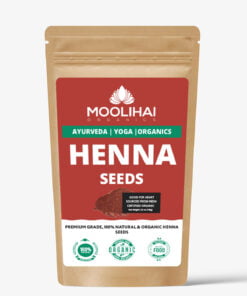


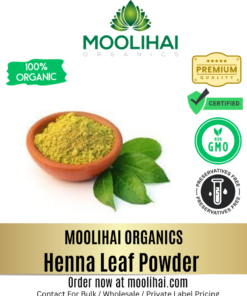

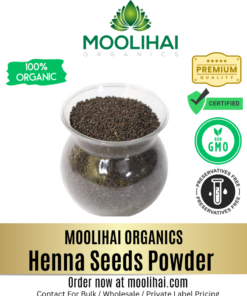

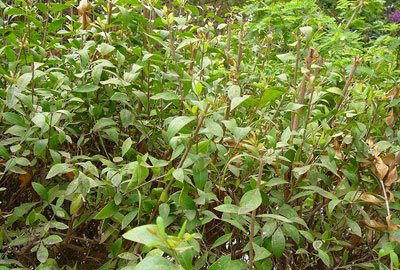
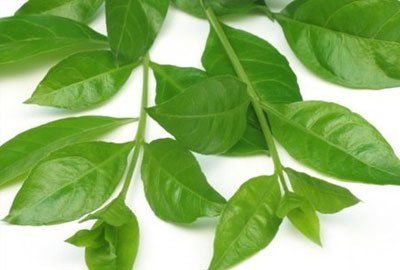
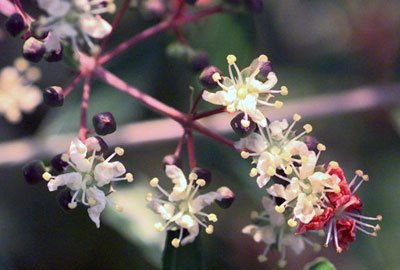
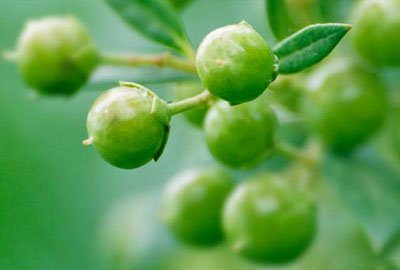
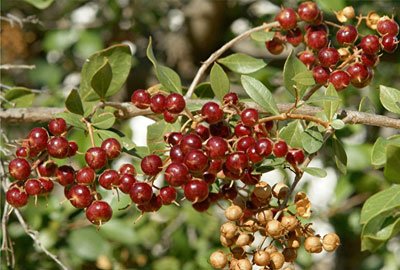
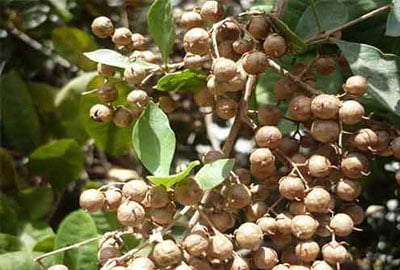
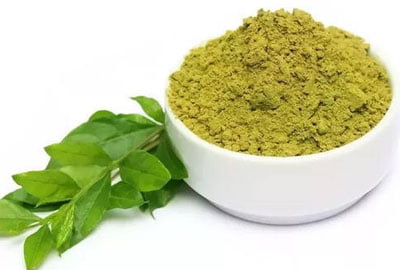
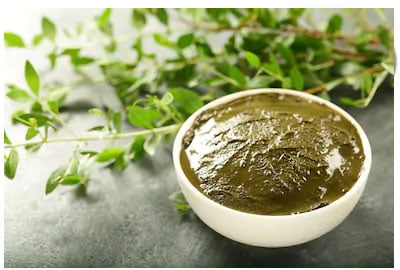
Ponnatharam Stone (Raw) | For Permanent Hair Removal
Vengai Paal | Black Bindi | Dhrishti Pottu | Vengai Pottu for Babies | 100% Natural
Dried Avaram Senna Flower / Cassia Senna Auriculata / Aavaram Poo / Tarwar / Amaltas Leaves / Senna Auriculata / Avaram Poo / Sanay / Alexandrina / Tanner’s Cassia flower
Natural Dried Moringa Flower – Moringa Oleifera – Drumstick Tree Flower – Murungai Poo – Munagaku Flower
Akasa Garudan Kilangu / Redfruit Creeper / Corallocarpus Epigaeus
Original Edible Camphor | Pacha Karpooram | Bhimseni Camphor
Saussurea Obvallata Seeds / Brahmakamal Seeds / Queen of the night / Sacred Saussurea Kon Kapfu / Brahma Kamalam / Nishagandha
Insulin Leaf Powder / Chamaecostus Cuspidatus / Costus Pictus / Spiral Ginger / Insulin Powder / Costus Igneus
Achu Pottu for Babies | Bindi Mould Set | Baby Seratta – 1 Set
Kaunch Beej Powder |Poonaikali | Velvet Bean Powder | Mucuna Pruriens | Kapikacchu | Natural Nervine Tonic & Muscle Builder
Aalam Pazham / Banyan Fruit Powder / Ficus Benghalensis / Marri Palu / Bargad / Dodda Alada Mara / Peraal / Vat Vriksha Powder
Traditional Vasambu Valayal for Babies | Calamus Bracelet | 100 % Pure & Natural